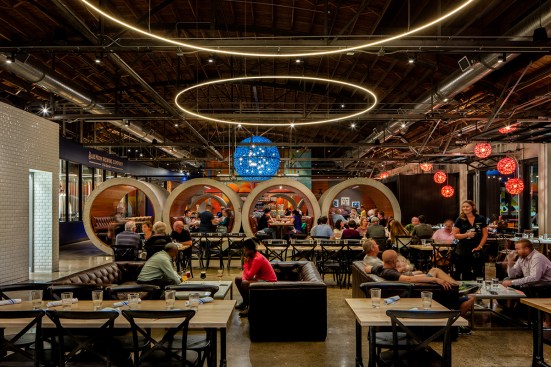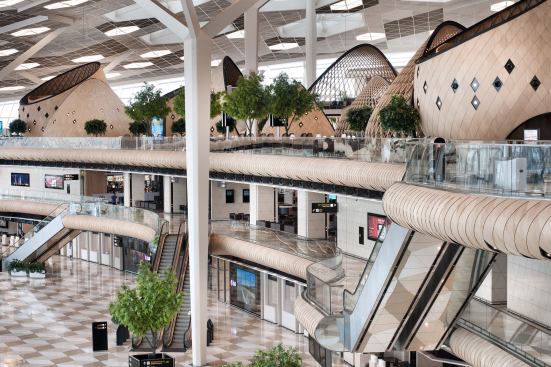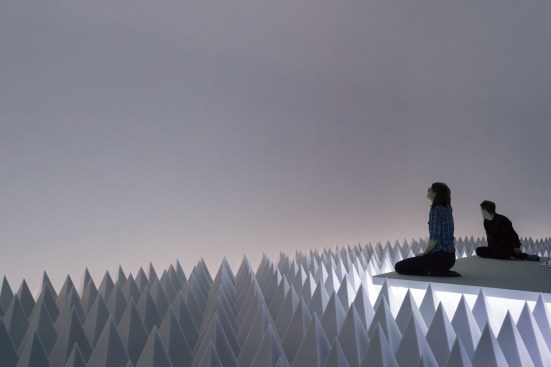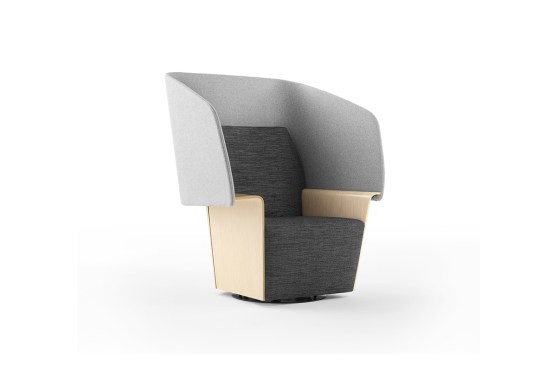As I tried to understand what my husband was saying in a crowded restaurant last week, failing to distinguish his intelligence and wit over the boom of the post-disco music from the sound system and the din of the ebullient patrons, it occurred to me how much noise is shaping our public life—for the worse.
Actually, it is our semi-public life, as public space in most cases is already so inimical to comfort and contact that we cocoon ourselves there with headphones and whatever means we can. In this way, we avoid any social interaction with others who might threaten our existence or just our self-definition.
No, it is in bars and restaurants, in airports and train stations, in waiting rooms and other spaces of limbo, where we are forced to be part of the environment and its social life that we find ourselves assaulted by the assertion of individual voices that drown out our ability to have any kind of meaningful interaction. As we try to concentrate on what somebody is saying or try to engage in some activity that is still licit in such places (reading, for example), we find ourselves confronting the guy on the phone mansplaining the next deal; the laughter of that one person who has to show that he really, really gets it; the pulse of the music that was tailored exactly for who market research says we are; and, of course, everywhere and always the blare of television, itself dominated by advertising.

James Florio
A large part of the problem here is the disconnect between the production of noise and its intended recipient. The guy on the cellphone is speaking not to somebody there, for whom he or she can modulate his voice, but to a partner far away to whom he has to make absolutely clear what his intentions are. The person programming the music in the restaurant or the television at the dentist’s office is working with either assumed shared interests or algorithms that define what taste is. And finally, all of us have to suffer from the assumption that we need continual information and stimuli, whether we want it or not. Even gas stations, which years ago started playing Muzak to deter those who wanted to use it as public space, now assault you with ads playing on the pump so that those few minutes when you are not listening to news or music in the car are no longer silent.

Kerem Sanliman
Autoban designed five types of cocoons, ranging from 305 square feet to 3,700 square feet in area, 20 feet to 34 feet in height, and 20 feet and 39 feet in diameter. One cocoon type contains two stories. The cocoon structures comprise a latticework of bent wooden beams slotted together. Some cocoon types leave the latticework structure exposed, allowing passerbys to see inside. Each open cocoons took two weeks for Ankara, Turkey–based contractor MAPA to construct. Laminated, diamond-shaped wooden panels that create a woven or scale-like appearance clad the other cocoon types; each enclosed cocoon took about three weeks to build. Some of the cladded forms taper into a point at the top while others are truncated on an angle.
Of course, this is a generational problem to a certain extent. Millennials are more tolerant of multiple stimuli, but they also seem to do less pontificating in public, and they certainly use their cellphones considerably less.
Still, sound pollution is a problem that architects should address. They long ago learned how to shape sound in a place, but generally do so only for specialized settings, in particular for music venues. In other places, architects still prefer hard surfaces and open spaces, leaving it up to technicians to solve the problems they have created with various forms of either active (white and gray noise) or passive (padded chairs and even sound-absorbing paint) means. But it is almost never enough.

Courtesy David Heald/ Solomon R. Guggenheim Foundation
I think that architects should recognize the “semi” part of semi-public space and ask: How can we create environments that bring us together, accommodate us as a social entity, encourage us to have relations, whether casual or serious, and yet also cocoon us, focus us, and frame us in such a way that we can make those relations meaningful and productive?
This would mean crafting more complex space, which would mean higher costs, but it also might mean learning from what furniture and interior designers are able to achieve. There is a reason people prefer booths or banquettes in restaurants: they provide at least some semi-public intimacy. Some of the airport lounges now provide high-backed chairs that extend around the sides, so that they buffer sound (and visibility), without shutting you off completely from your surroundings.

Courtesy Allsteel
There are limits, of course, to what architects can do. I can only hope that advances in personal technology will help us along, for instance by killing televisions in public space, as everybody will be watching their own devices anyway. Advances in imaging and transmission might also add enough visual capabilities that people speaking on those instruments will get a sense of the presence of a person, thus causing them to address that virtual appearance, rather than the air. The flip side of this is that such advances will also separate us more from each other.
Architecture has long been concerned with how to solve the problem of creating not just privacy and public beauty, but also a relation between the two. Even though that might seem like a losing battle in an era in which our social fabric is unraveling at an alarming rate, it is a task to which I believe it is of great importance that architects bring their skills and knowledge. They must extend their efforts beyond the visual and the haptic to the aural. In the public arena, we deserve to hear and be heard—or to sit in companionable silence, enjoying the presence of another human being.
